Love + Prosocial 1 - Oxytocin & Vasopressin (vs. testosterone) - Differential Psychology
1/44
Earn XP
Name | Mastery | Learn | Test | Matching | Spaced |
|---|
No study sessions yet.
45 Terms
Prosocial effects of oxytocin and vasopressin (4 points)
Maternal and paternal behaviour
Attachment in young
Social recognition
Sexual behaviour
Pair bonding and social bonding (i.e. adult affiliation)
Empathy and Theory of mind (humans)
Interpersonal warmth & Trust (humans)
Reduces anxiety (cautious social distance?)
Walum et al. (2008) - AVPR1a gene (3 points)
If both your copies of this gene are a particular variant allele, your marriage is of poorer quality.
Looked at both animal models and manipulation of genes, IVs, etc, to understand indiv diff.
AVPR1a gene: Produces vasopressin receptors.
Bartels & Zeki (2004) - maternal vs. romantic love (5 points)
fMRI studies in humans, UCL. People who had 'recently fallen in love.’
Looked at differences in romantic love and maternal love.
Neuroimaging subtraction technique:
Task activation pattern MINUS control pattern = ‘Core’ activation specifically relating to task.
Should be left with brain regions focused on romantic love.
“Both types of attachment (ie maternal and romantic love) activated regions specific to each, as well as overlapping regions in the brain's reward system that coincide with areas rich in oxytocin and vasopressin receptors.”
Insel & Young (2001) - prairie vole (3 points)
A male and female prairie vole typically form a life-long pair bond after one mating/cohabitation episode - rare for animals.
Good for testing neurobiological basis of romantic love.
Links between pair bonding and biparental care? Yes, but not always.
Why does biparental care necessary for some species?
Male and female team up as economic unit? - necessary need for many resources.
Lim et al. (2004) - prairie vs. meadow vole
“Prairie voles (microtus ochrogaster) exhibit a monogamous social structure in nature, whereas closely related meadow voles (microtus pennysylvanicus) are solitary and polygamous.”
Monogamous voles
Praire mole
Polyamorous voles
Meadow voles
Montane vole
What percentage of mammalian species have a monogamous social structure and what does this indicate? (3 points)
< 5%. Indicates:
Lasting pair bond between adult mates
Both male and female care for offspring
Is oxytocin or vasopressin more important in females?
Females
Is oxytocin or vasopressin more important in males?
Vasopressin
Which forebrain regions do oxytocin and vasopressin act in? (2 points)
Ventral pallidum
Caudate
Putamen
Nucleus accumbens
Ross & Young (2009) - oxytocin
Oxytocin promotes adult pair bonding: oxytocin receptor density is increased in monogamous vole.
Ross & Young (2009) - oxytocin (prairie vole vs. mouse vs. rat) (3 points)
Compare prairie vole to other animals - shows Oxytocin receptor density in different parts of the brain.
Oxytocin receptor density in nucleus accumbens (Nacc) and caudate and putamen and prefrontal cortex is clearly very much higher (black staining) in the prairie vole (monogamous) compared to the rat and mouse (which are NOT monogamous).
Reasonable hypothesis: more oxytocin receptors may predispose to increased pair bonding?

Ross & Young (2009) - oxytocin (prairie vole vs. montane vole) (3 points)
Better is a within-animal comparison.
Oxytocin receptor density is clearly much higher in the prairie vole, the monogamous species, than the non-monogamous montane vole.
Thus more oxytocin receptors may predispose to pair bonding?
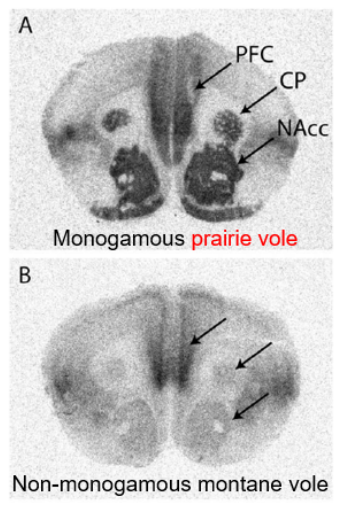
Partner preference test (voles) (2 points)
Cohabitation period - Bring together a male and female vole together for a fixed cohabitation period (c. 18-24 hours.) Observe effect on behaviour. They may mate (check for mating.) Subject may be male or female. Partner and stranger = opposite sex. Typically female in oxytocin studies, male in vasopressin studies.
Test period - Then observe interactions over a test period (e.g. 3 hours). Ask eg. How much time do these sexual partners spend side-by-side? Then compare to ‘stranger’ vole who has not mated with subject.
Ross & Young (2009) - Partner Preference Test (5 points)
Oxytocin receptor ANTAGONIST infused into 3 different oxytocin-receptor-rich regions.
OTA - Oxytocin antagonist - stops Oxytocin from binding.
Reversal of behaviour - monogamous behaviour no longer exhibited.
Infusion of the OXT-R antagonist into the nucleus accumbens OR prefrontal cortex was sufficient to BLOCK preference for the mating partner over a stranger.
Conclusion: Oxytocin receptors in the nucleus accumbens and prefrontal cortex are required for normal adult pair bonding.
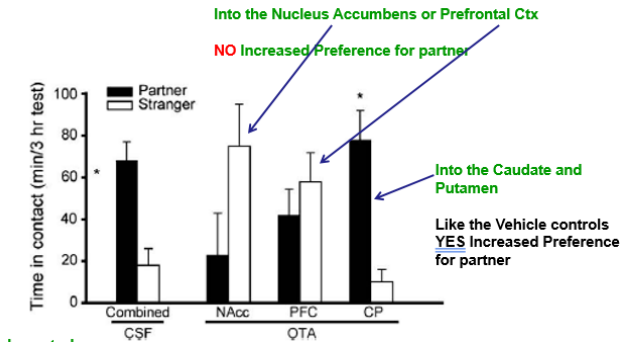
Oxytocin is released during… (3 points)
Prairie vole mating
In rats & sheep during vaginocervical stimulation
In human sexual behaviour (not much studied)
In relationship to mating behaviour, in females, there is some evidence for a positive relationship between…
Subjectivity intensity of orgasm & oxytocin release
Murphy et al. (1987) - oxytocin and vasopressin peaks
Both signals show strong increases at arousal/ejaculation.
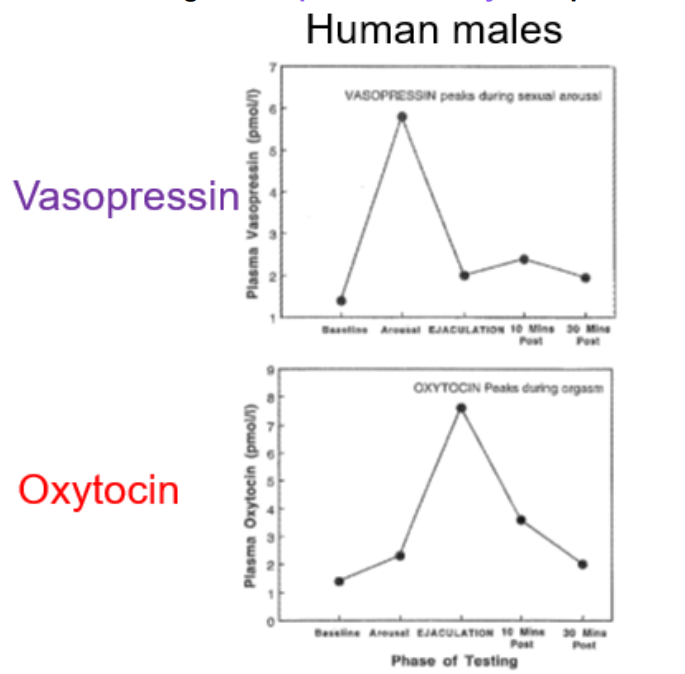
Vasopressin in mating behaviour
Helps in seeking what an animal would like in a sexual partner.
Oxytocin in mating behaviour
Responsible for pleasurable feeling during sex (in females).
Lim et al. (2004) - vasopressin (prairie vs. meadow voles) - study (4 points)
Changing the vasopressin V1a gene’s expression made the solitary meadow vole show much increased partner preference.
Red text: Comparison of behaviour in prairie and meadow voles. A, B) Although prairie voles and meadow voles are similar in physical appearance, prairie voles are highly affiliative as depicted here in ‘huddling’ side by side (a), whereas meadow voles are solitary (b).
C, D) Partner preference test. After mating and cohabitating with a female, a male prairie vole tended to spend significantly more time in contact with the partner (filled columns) than the stranger (open columns) (P , 0.05, Student’s t-test) (c), whereas meadow voles do not form partner preferences and spent relatively little time huddling with either female (d).
Change in behaviour - meadow vole behaves much more like prairie vole - monogamous behaviour. Effect is specific to partner, not stranger.
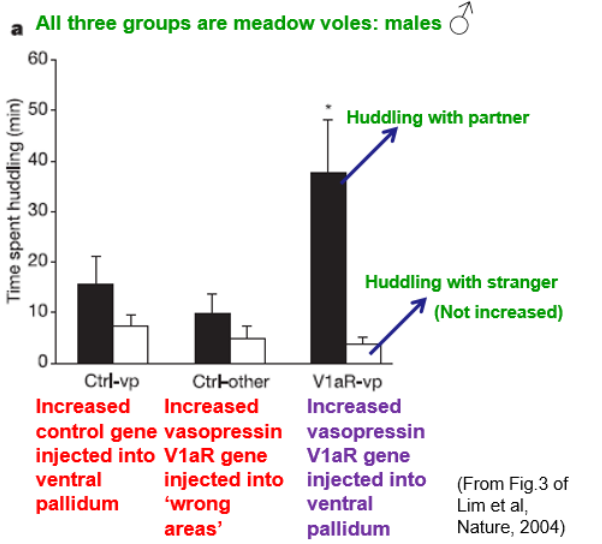
Lim et al. (2004) - vasopressin (prairie vs. meadow voles) - summary of findings (4 points)
Larry Young’s group artificially over-expressed the V1aR gene (DNA) in a reward region of the brain called the ventral pallium in male meadow voles (NOT monogamous, & they do not show partner preference as measured by huddling).
V1aR gene over-expression increased the number of Vasopressin 1A receptors (proteins) on the post-synaptic membranes of vasopressin-responsive neurons (in that brain region). The same amount of vasopressin released would now have a much larger effect on the vasopressin-responsive neurons.
Male meadow voles who received the V1aR Ventral Pallium over-expression showed unusually (non species-typical) strong huddling!
Conclusion: Higher V1A receptor density increases adult pair bonding.
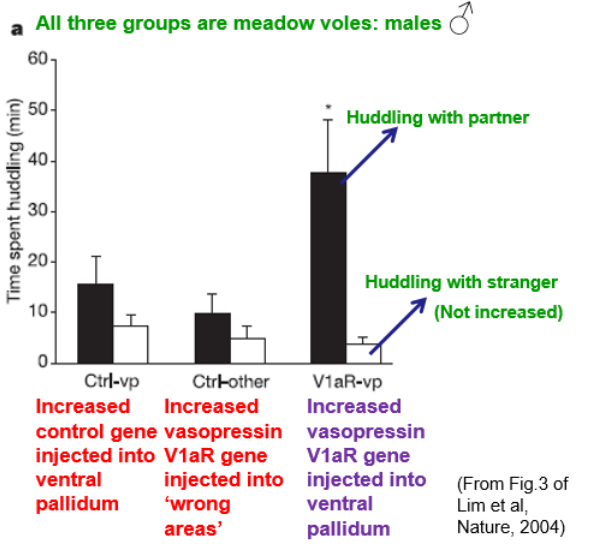
In pair bonding, blocking oxytocin and vasopressin receptors eliminates…
Post-coital huddling
Vole studies examine… (2 points)
Species differences (e.g. vole vs mouse, polygamous vs monogamous vole)
Experimentally-induced differences (exogenous differences) (over-expressing or blocking neuropeptide receptors).
Walum et al. (2008) - AVPR1A gene (2 points)
Genetic variations in this vasopressin is associated with pair-bonding behaviour in humans.
This is the same gene that Larry Young’s group overexpressed in meadow vole males and made meadow voles more ‘monogamous’.
'Worse' (risk) gene - if you have both copies of risk allele, more likely to score worse on indexes of romantic behaviours.
Women in relationships with men who have 1 or 2 ‘334’ alleles say that their relationship is of lower quality than those women with men who have ZERO ‘334’ alleles.
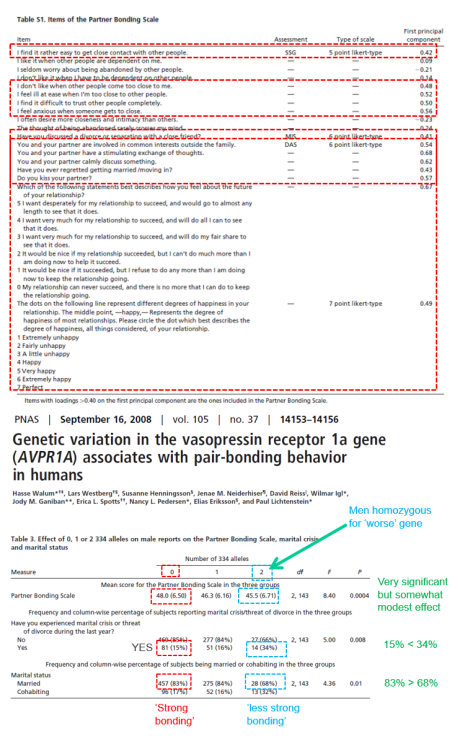
‘Partner Bonding scale’ questionnaire (3 points)
Consisting of 13 items overall, drawn from:
Dyadic adjustment scale (DAS) (7 items)
Support Seeking and Giving (SSG) assessment (5 items)
Marital instability scale (MIS) (1 item)
Serious Marital Threat question
Has subject experienced marital crisis or threat of divorce during the last year? (from a Life Events questionnaire).
According to Walum et al. (2008), men with 1 or 2 copies of the alleles in the AVPR1A gene… (2 points)
You are less likely to get married (an objective fact)
You are more likely to experience a serious threat to your relationship (your self-report)
You show a less-bonded pattern of relationship with your partner (your self-report)
Your female partner reports less quality in the relationship, particularly regarding affection
Finally, no significant effects for female polymorphisms of the AVPR1a gene.
Walum et al. (2008) - interpretations (4 points)
Differences in romantic partnership behaviour may owe in part to genes relating to vasopressin (this is just re one allele on one gene).
Animal models’ usefulness: Striking conservation of gene function, promotes pair bonding, particularly the male of the pair.
While the effect sizes seem relatively modest bear in mind:
This was a study of couples together for at least 5 years. Perhaps many men with 334 allele aren’t typically in a relationship, or only in short ones. Thus the present study may underestimate the way in which the 334 allele predisposes against ‘marriage’.
‘Marriage’ is rather complex. E.g. consider influence of Drive, Duty, conscientiousness, and religious and cultural beliefs.
Ditzen et al. (2009) - oxytocin in prosocial behaviour (2 points)
Ps given oxytocin showed more positive than negative behaviour.
Can vary levels of prosocial behaviour in men and women by administering oxytocin.
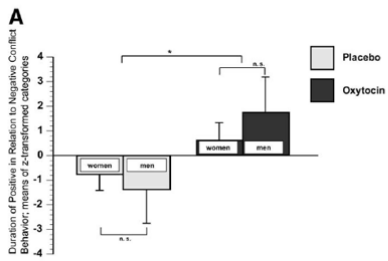
Ditzen et al. (2009) - oxytocin and cortisol (3 points)
Subjects given oxytocin show lower cortisol levels after couple conflict, particularly in women.
Oxytocin reduces stress
Exogenous variation
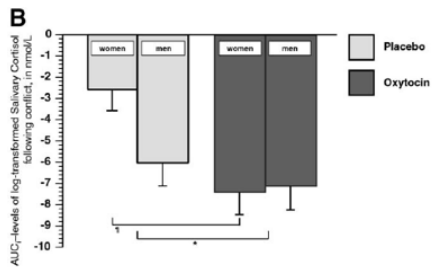
Gonzaga et al. (2006) - oxytocin, romantic love, sexual desire - procedure (4 points)
Subjects: 25 young women recount and relive a positive emotion regarding love or infatuation with their male partners present (typically 2 minutes long).
Blood drawn from subjects during this and earlier baseline condition, later tested for oxytocin content (& other conditions not relevant here).
Scorers observe non-verbal behaviour in women:
Affiliative (romantic), e.g. affirmative head nods, Duchenne smiles, leaning towards partner.
Sexual, e.g. lip licking, lip puckering, tongue protrusions.
Gonzaga et al. (2006) - oxytocin, romantic love, sexual desire - findings and conclusions (5 points)
Romantic display strongly correlates with Oxytocin release.
To be precise: Duration of romantic displays as % of duration of romantic episode narration (~ 2 minutes) correlated positively with increase in oxytocin relative to first baseline.
No correlation with overt sexual displays.
Summary: Oxytocin release may support romantic behaviour.
Causality unclear: virtuous cycle? Oxytocin-behaviour-oxytocin?
Strategy - oxytocin and vasopressin in love and desire (4 points)
Co-operative: brings the benefits of monogamy, promotes ‘love’.
‘Quality of bond not quantity’
Commitment to existing bonds, i.e. enhancement of adult pair bond and parenting.
Reduced aggression with mate & progeny
Strategy - testosterone in love and desire
Competitive: brings the benefits of polygamy (infidelity), promotes ‘sex’.
‘Quantity of mates not quality’
Focus upon more partners
More attractive partner? i.e. more ‘mating’, less ‘pair bonding’, more children
Higher aggression with mate & progeny?
Speculation of strategies (oxytocin, vasopressin, testosterone) (4 points)
Pure strategy of either not that evolutionarily stable?
If everyone is ‘high testosterone’ only, children die at too high rates, or do not thrive, from abandonment & low parental investment. Influx of ‘high oxytocin/vasopressin’ will spread because children suddenly thrive to adulthood, and then produce children themselves.
If everyone is ‘high oxytocin/vasopressin’ only, network is highly vulnerable to influx of ‘high testosterone’ strategy. A bit like loafers.
So humans exhibit a mixture of both strategies, and individual differences.
Burnham et al. (2003); Gray et al. (2002) - testosterone (5 points)
Testosterone levels are lower in adult pair bonding
Is the effect due to predisposition or experience? One or both?
Predisposition?: High Testosterone man chooses not to get married and have kids?
Experience?: Romantic and paternal activity actively lowers testosterone?
Looks like both factors play a role but have a look at the literature.
Difference in married, not married, and no children.
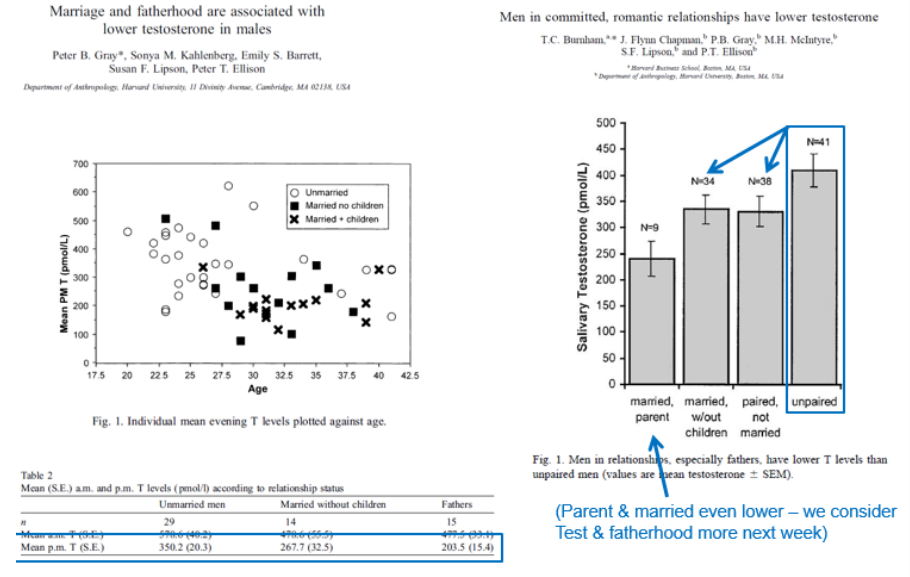
Booth & Dabbs - testosterone (4 points)
Variation in testosterone signals predicts individual differences in pair bonding.
Hi-test men > doubly likely to not get married; doubly likely to divorce; double likely to be unfaithful.
What is good about study:
Adjustment for age
Many different facets of this form of adult pair bonding (marriage)
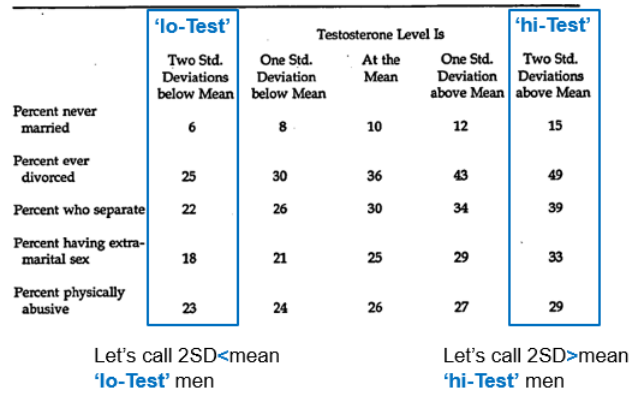
Mascaro, Hackett & Rilling - parenting and mating (4 points)
The biology of human males represents a trade-off between:
effort spent on mating
effort spent on parenting
A simple interpretation and hypothesis:
The effort on mating is mediated by testosterone
The effort on parenting is mediated by oxytocin
Chin et al. (2020) - testosterone (5 points)
Looked at WLW relationships.
Birth mothers reported HIGHER relationship satisfaction when their partners had LOWER testosterone (TEST).
Non-birth mothers reported higher perceived support and relationship commitment when their partners had LOWER testosterone.
Non-birth mothers with LOWER testosterone reported receiving MORE support, and HIGHER relationship satisfaction, commitment & investment.
Higher scores indicate better satisfaction, investment etc, so negative correlations mean HIGHER testosterone levels were associated with LOWER relationship quality between these couples.
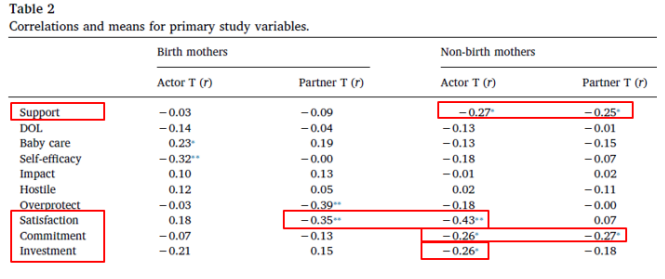
Harris, Vernon & Boomsma (1998) - testosterone (3 points)
Demonstrated that testosterone is heritable.
Correlations in MZ twins > Correlations in DZ twins
Identical twin values (MZ) are very similar (in both males & females) and higher than for non-identical twins.
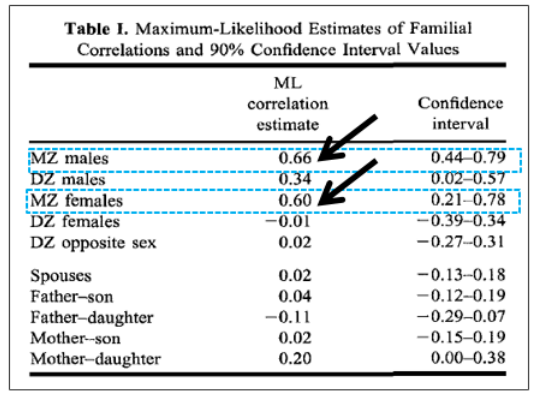
Heim et al. (2009) - childhood abuse (3 points)
Childhood abuse/neglect lowers adult oxytocin.
Two possible interpretations, not mutually exclusive
Low-loving interactions (hugs/cuddles/praise) gradually reduce Oxytocin
Protective mechanism – ‘shutting down’ normal levels of prosocial responsiveness because these would lead to more stress/pain

McQuaid et al. (2013) - childhood maltreatment, depression (3 points)
Might seek positive reinforcement more with this allele - causes more negative treatment.
The GG/GA alleles of the rs53576 SNP of the Oxytocin Receptor typically confer increased empathy & trust; but under high levels of childhood maltreatment, this prosocial predisposition becomes maladaptive.
Overly loving, trusting, giving to e.g. callous, psychopathic parents is not good for you